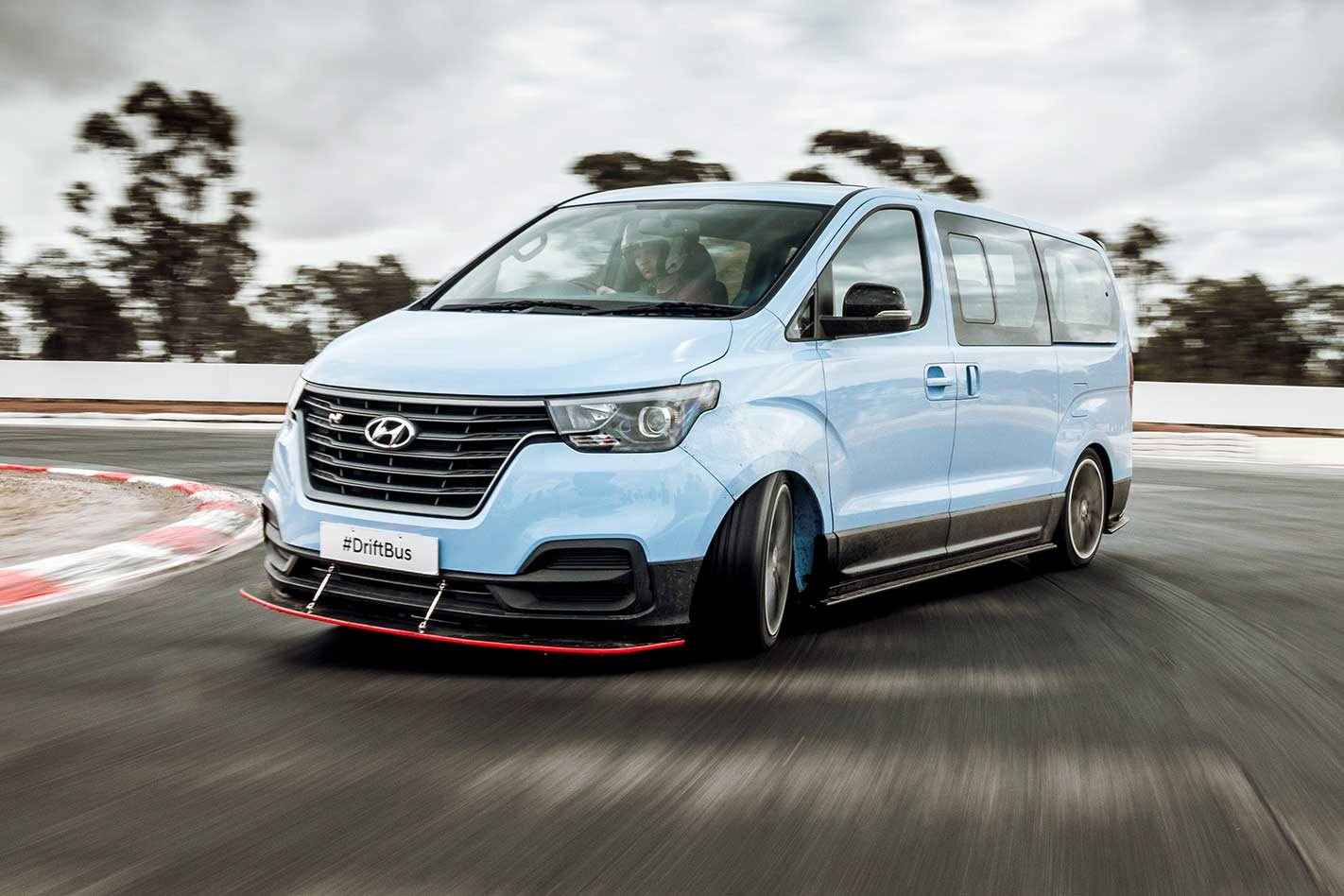Oh crap, not again. The flap-flap-flap of rubber strands hitting the inner wheelarch is the death rattle of yet another tyre. Hyundai’s usually affable technician (let’s call him Safety Pete) won’t be happy at the prospect of having to get the jack and rattle gun out again, but the Drift Bus is merely doing what it was built to: convert rubber into fluffy white clouds.
But let’s rewind to the beginning of the story. On April 1, 2019, Hyundai Germany released computer-generated images on Instagram of a Hyundai iMax N. Now, the date should provide a clue as to the veracity of those images, but while the Germans were chuckling into their weissbeer, Hyundai Australia was rolling up its sleeves and getting to work. A little over six months later the real-life iMax N ‘Drift Bus’ was revealed.
It was a risky move. The Drift Bus was built in complete secret and there was a small chance those responsible would be loaded into said iMax and sent packing. Of course, history had shown that the idea of a tyre-shredding 300kW eight-seater van could practically blow up the internet, leading Hyundai Australia to give the Drift Bus its public debut at the 2019 World Time Attack event. Now it’s our turn.
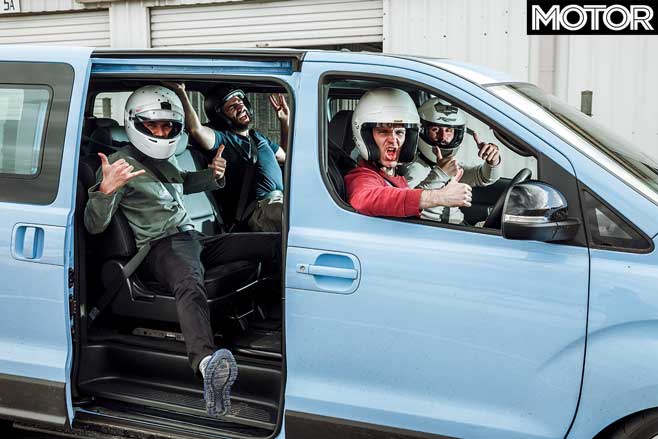
The first thing that strikes you about the iMax N is the quality of the build. One-off prototypes can be pretty ropey, even at OEM level, but the Drift Bus clearly wasn’t cobbled together over a weekend in some dingy workshop. From start to finish the project took seven weeks, project lead Geoff Fear saying “the hardest part was to make it look as factory as possible”.
The Drift Bus started life as a humble standard diesel iMax. Like Harry Potter or Frodo Baggins, it had enjoyed a quiet, comfortable existence, yet was about to be thrown into a life of adventure through no fault of its own.
The first stop was the upholsterer’s to have the interior removed, then the body shop to have all the panels stripped before the naked shell was trucked to Hyundai HQ for open-heart surgery to commence.

Most parts came from a prototype that Hyundai asked us not to name, but keen detectives probably won’t have too much trouble deducing its identity from the spec list. Anyhow, out went the standard 125kW/441Nm 2.5-litre oil-burner, replaced with a 3.5-litre twin-turbo V6 backed by an eight-speed automatic. A bit of firewall massaging was needed to make the bigger engine fit, as well as custom mounts for it and the new ’box.
A custom tailshaft sends power rearwards to the locked diff by renowned specialists CIG. A factory LSD was trialled but wasn’t tight enough and the diesel’s super-tall 2.9:1 diff was ditched for the petrol iMax’s 4.1:1 unit, which Fear says “livened it right up”. Outputs are conservatively quoted at 300kW/555Nm, which might sound plenty but the Drift Bus weighs 2207kg, resulting in a power-to-weight ratio roughly equivalent to that of a VW Golf GTI.
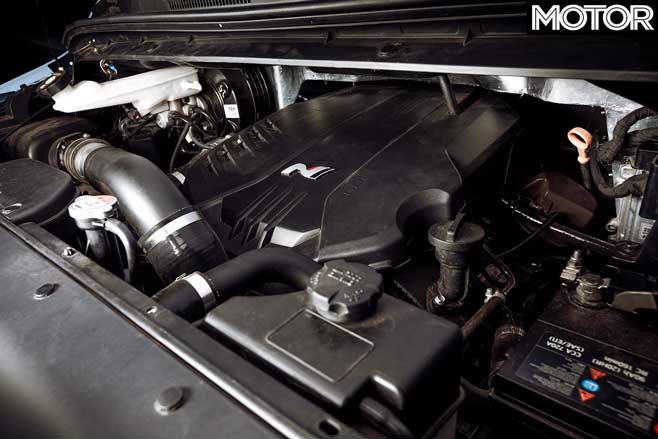
In order to keep that mass in check, the chassis received a similarly thorough going-over. Electronically controlled dampers were installed, though time constraints prevented a custom tune being developed, so they’re locked to their firmest setting. The rear axles were redrilled from six- to five-stud to allow the fitment of 19 by 8.0-inch i30 N wheels.
No such work was required at the front, as the prototype donated its entire upright assemblies, including struts, discs, calipers, knuckles and hubs. It endows the Drift Bus with 348mm ventilated discs and four-piston calipers at the front, with 358mm discs and single-piston calipers out back and performance pads all round.
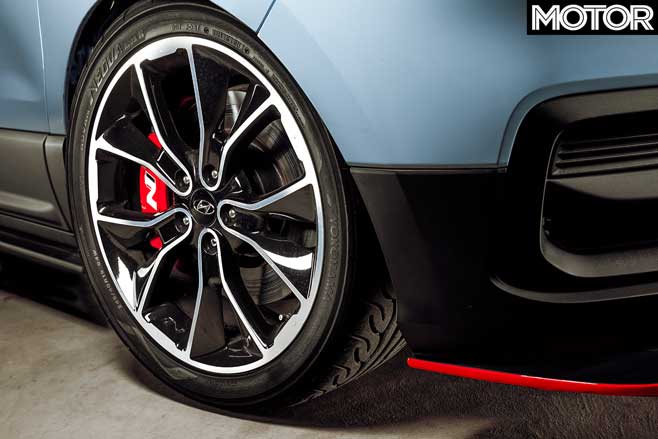
At the rear the body was modified to accept the new dampers and the upper arm made adjustable to alter the pinion angle on the diff for more/less traction, while up front the iMax’s standard lower control arm was retained but a modified ball-joint installed to connect to the new hub assembly. Custom steering arms widen the front track by about 100mm and initially the rack was going to be replaced, only for Fear to discover the bottom half of the iMax rack happily mates with the top end of an i30 N rack, allowing the fitment of an i30 N-line steering wheel complete with paddleshift.
The N theme continues inside. All the (originally cream-coloured) plastics were repainted grey, the seats stripped, foam added for more support and re-upholstered in suede, while the roof was also re-lined. The power front seats are from an i30 N Premium. In fact, it’s remarkable how many functions work: the sunroofs, the electric windows, the drive mode controller – you could forgive Hyundai for cutting a few corners in a one-off prototype, but it’s been done properly.
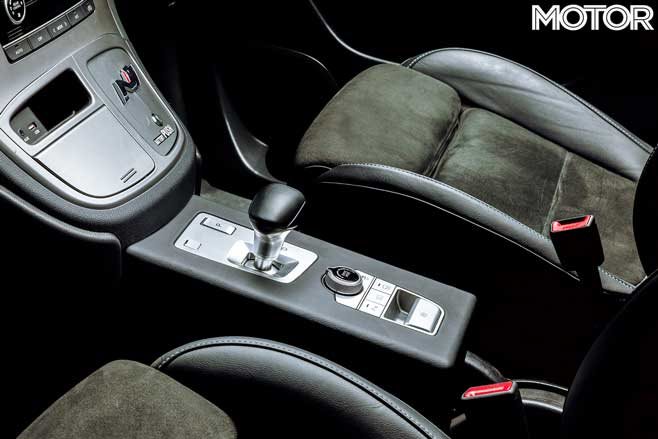
This attention to detail carries over to the exterior, the Drift Bus resplendent in N’s signature Performance Blue, the front guards subtly rolled to clear the wider tracks. The front splitter jutting from the chin sports the scars of kissing the tarmac, while twin exhausts sit either side of an extended diffuser at the rear. It looks ready for action – so let’s not disappoint it.
It’s impossible to know what to expect from the Drift Bus, and to further muddy the waters these first familiarisation laps are to take place on a sodden Winton Raceway. Torrential rain keeps the photographers and videographers under cover.
It’s definitely still a van from the behind the wheel – you sit high with the steering wheel inclined away from you – and the potential challenges become clear leaving the pit garage.

At 3.57 turns lock-to-lock, pinpoint steering precision was never a priority in the iMax development process, and the rear tyres chatter as the locked diff fails to do what a diff should (allow wheels to rotate smoothly through differing arcs).
There’s no point in wasting time, so as soon as pit exit is cleared the throttle meets the floor and the V6 revs freely as the rear tyres spin furiously on the wet surface. It all feels fairly precarious; the track is slippery, with plenty of standing water, there are no electronic driver aids, and the Drift Bus isn’t the most communicative vehicle going around.
A stab of the throttle in Winton’s slowest corner provokes the rear into a clumsily caught slide; doing the same in the next corner once again sends the rear end wide, but in the process of catching it the power steering disappears, leaving me wrestling mightily to keep 2.2 tonnes of Drift Bus on track.
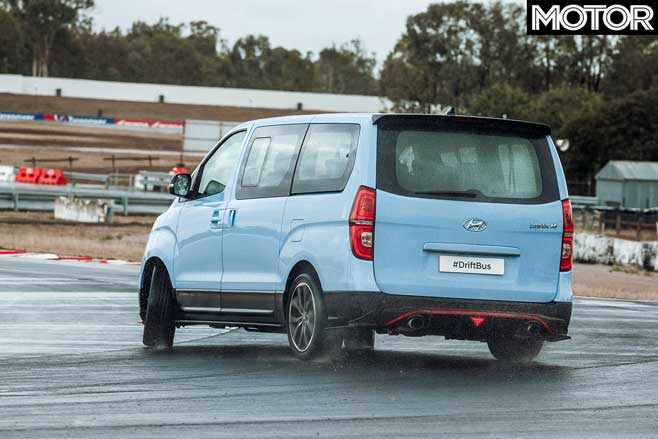
Like a McLaren, the iMax retains hydraulic power steering, but the donor car uses electric assistance with no provision to run a hydraulic pump; a solution using an electric pump was fitted, but struggles to keep the fluid cool during such automotive gymnastics.
There are further issues. Once the turbos wake up, the power arrives quite suddenly. That leads to lurid oversteer, at which point the gearbox automatically shifts to third, making balancing the power difficult. And then the power steering disappears again.
There’s no air-conditioning, either; it’s not a hot day, but the effort required in wrestling this big, blue dragon is leading to driver overheating issues and steaming up the windows like a Finnish sauna. I’m beginning to wonder if this was such a good day; it’s an interesting challenge, but there’s a good chance sliding this beast around accurately for the cameras might be biting off more than I can chew.
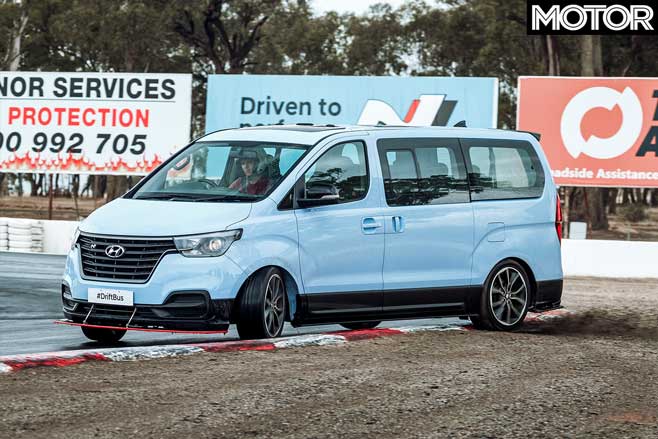
Thankfully, the rain stops, track conditions improve and with familiarity the Drift Bus starts to feel more natural, or as natural as a flying bright blue brick can feel on a racetrack.
When you’re not auditioning for the next Fast and the Furious movie it drives quite well. It’s certainly quick enough in a straight line, it turns in accurately and displays reasonable poise mid-corner. I’m not sure I would want to attempt a lap time in it, but it can be driven quickly with confidence. The locked diff promotes plenty of front-end push, a feeling exacerbated by the slow steering, but on-limit understeer is definitely preferable to having that towering rear-end swing wide in the middle of Winton’s sweeper.
In standard guise the Drift Bus develops about 240kW at the rear wheels, but the freer-flowing exhaust is causing an overboosting issue, leading the standard ECU to adopt a more conservative tune – at a guess, limiting power to around 200rwkW. In the wet this has actually been of real benefit, smoothing out the power delivery and making the iMax more controllable in a slide, but with the track now almost dry the engine is struggling to keep the wheels spinning once the gearbox automatically clicks into third.
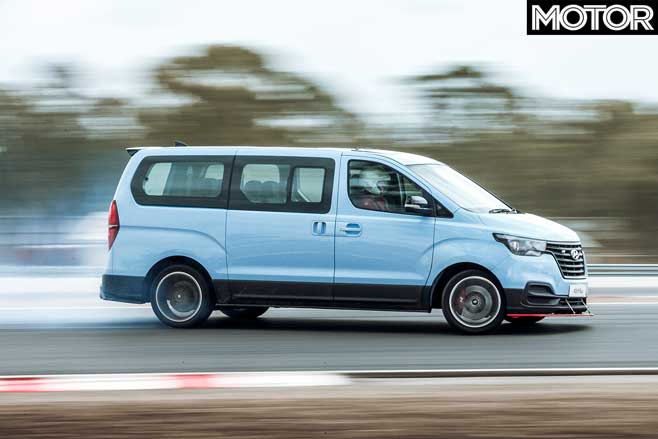
Helpfully, a technician is on hand with a laptop and half an hour later the overboost issue is gone and there’s a helping of extra power to boot. This iMax now hauls serious arse and even on bone-dry tarmac continues to atomise the rear tyres once the transmission auto-upshifts.
With a morning of practice under my belt, the Drift Bus is huge fun; it has plenty of steering lock and with a massive 3200mm wheelbase – a long-wheelbase Mercedes S-Class measures 3165mm between the axles – you have enough time to check your watch and adjust the radio before worrying about the oversteer angle.
There are a number of ways to initiate a drift: on slippery surfaces the handbrake works well to yank the rear end sideways; alternatively, a bootful of power is equally effective. In the dry a little more commitment is required. The chassis doesn’t have the adjustability to trail-brake the rear free, but the balance is neutral enough that feeding in the power when cornering hard gradually loosens the rear tyres’ grip on the road.
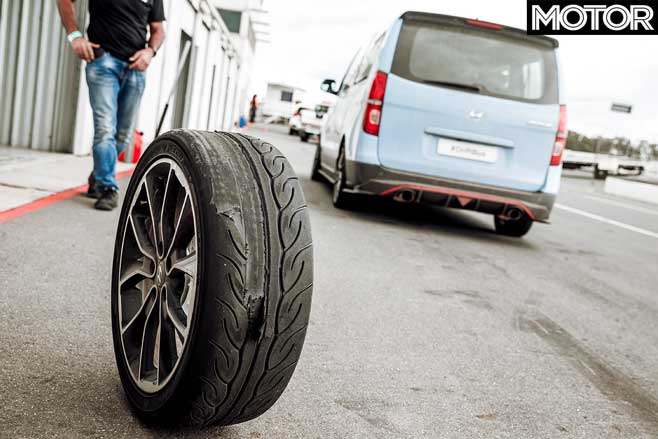
Alastair’s photos suggest a fairly extreme roll angle, but from behind the wheel there’s never a fear it will topple over or really do anything untoward. It would probably link corners quite easily, but the thought of running out of power assistance halfway through the transition puts paid to that idea.
Fixing the steering is on the to-do list, along with a custom tune for the adaptive dampers and extracting a little more power from that twin-turbo V6. I hope it happens, as the Drift Bus is a remarkably complete proposition that needs only a few tweaks to deliver its best. The signs are encouraging, for it was already on the dyno the day after our shoot.
Still, even in its current guise it’s a massive laugh, happily sliding through almost every one of Winton’s corners with the engine singing and the tyres smoking, which brings us back to the beginning of this story and the sound of another tyre crying ‘enough’. It might not have signed up for it, but it seems the iMax N quite enjoys this life of adventure.

Hyundai iMax N ‘Drift Bus’ Specs BODY: 5-door, 8-seat van DRIVE: rear-wheel ENGINE: 3497cc V6, DOHC, 24v, twin-turbo BORE/STROKE: 93.0 x 85.8mm COMPRESSION: 10.5:1 POWER: 300kW @ 5500-6500rpm TORQUE: 555Nm @ 2000-6500rpm WEIGHT: 2207kg POWER-TO- WEIGHT: 136kW/tonne TRANSMISSION: 8-speed automatic SUSPENSION: struts, coil springs, anti-roll bar (f); multi-links, anti-roll bar (r) L/W/h: 5150/1920/1935mm WHEELBASE: 3200mm TRACKS: 1815/1685mm (f/r) STEERING: hydraulically assisted rack-and-pinion BRAKES: 348mm ventilated discs, 4-piston calipers (f); 358mm ventilated discs, single-piston calipers (r) WHEELS: 19.0 x 8.0-inch (f/r) TYRES: 235/45 ZR19 (f); 255/40 ZR19 (r); Yokohama Advan Neova AD08R PRICE: Bored sheikhs with blank cheques need only apply
PROS: It’s an eight-seater van that does massive skids CONS: A few mechanical tweaks needed; it’s a one-off RATING: 4.5 out of 5 stars
Top Three: Insanely Fast Vans
Ford Supervan
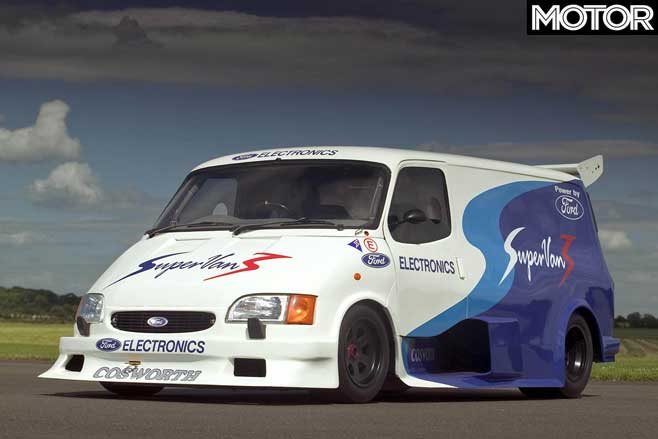
Ford has produced three iterations of the Transit Supervan, the first on a GT40 platform, later a Group C platform with a 522kW Cosworth V8.
Renault Espace F1
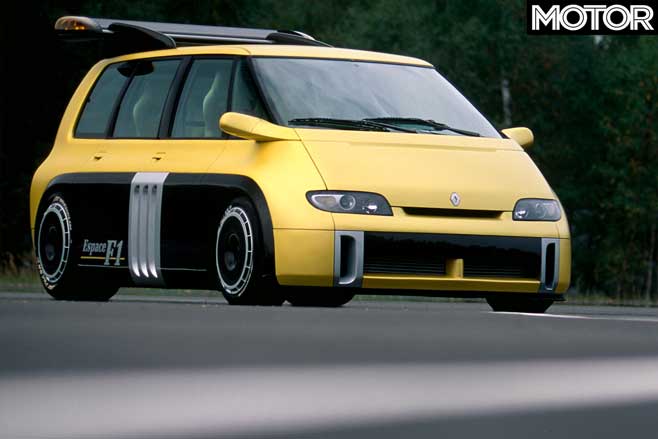
Undoubtedly the wildest-ever van, a carbonfibre facsimile of an Espace was dropped over the chassis and V10 engine of a Williams FW15C.
Ford Transit WRT
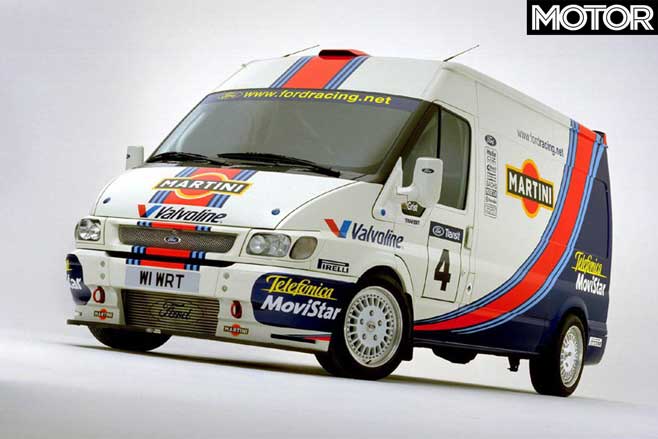
One that’s actually practical for the road, the World Rally Transit had a 150kW diesel engine, stiff suspension and interior from the Focus WRC.


